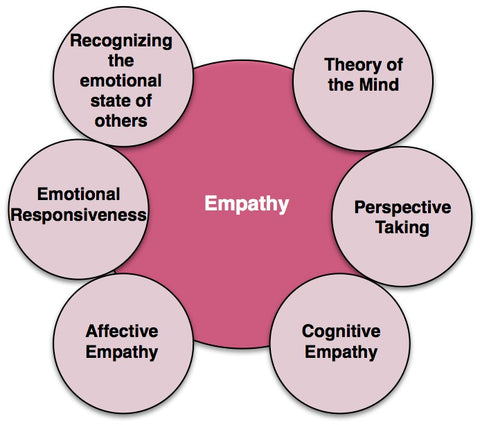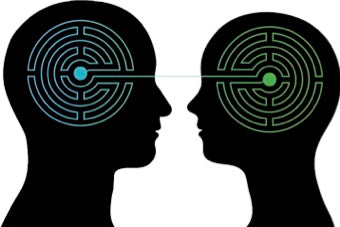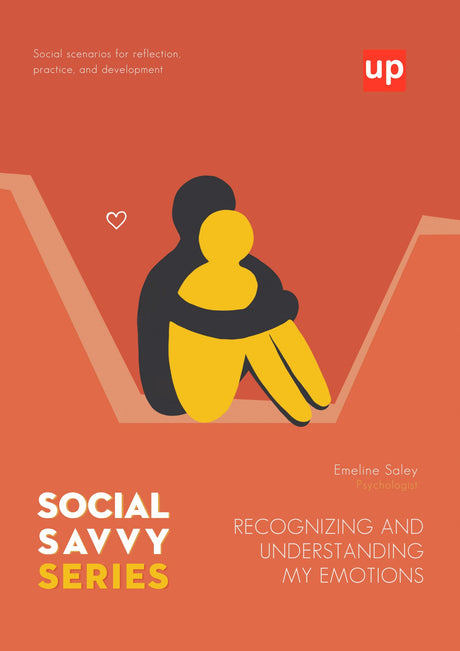Empathy signifies the ability to identify oneself with the emotional state of another person as well as to understand and value this person’s feelings, behaviour and motives. It is the ability to share other people’s feelings and the capacity to infer and respond appropriately to what they might be thinking or feeling.
Spoken interaction and communication is not a precondition for empathy to be displayed. Empathy can be established simply by observing and listening to another person, while paying attention to his / her body language, gestures and facial expressions.
Modern researchers usually distinguish between two components of empathy, affective empathy and cognitive empathy. Affective empathy is broadly defined as the capacity to identify with other people’s feelings and respond appropriately to their emotional state. Cognitive empathy is generally defined as the ability to infer what other people are thinking or feeling, the capacity to understand what mental state other people are in. It is the skill that allows us to view and evaluate a situation from another person’s standpoint or perspective. Studies have demonstrated that people with autism spectrum disorders experience difficulties in developing the above skills.
Empathy is a vital skill that enables people to live a more enriched and successful life. It can significantly contribute to more effective social interaction, as people with well-developed empathy skills are more likely to exhibit a genuine interest in the state of others, even if this entails that they will have to compromise their own interests.
Empathy is a life-essential skill, offering a vast potential to:
- mitigate stereotypes and prejudices,
- reduce levels of aggression and bullying among children,
- encourage people to take up challenges for the sake of others and
- mitigate social inequality.

Stages in the development of empathy:
Empathy skills emerge early in life and are demonstrated in different ways at each age, following a developmental model which is generally compatible with the model pertaining to cognitive development. As children grow, their capacity for empathy i.e. their ability to interpret and value other people’s feelings is expanded.
Nurturing empathy skills can have multiple benefits, one of which is that it can significantly contribute to children’s better school attainment and more effective social interaction. Regarding the development of empathy, the capacity to perceive and consider other people’s feelings becomes more evident as we build an awareness of our own emotions and the ability to accept them.

According to Hoffman, there are four main stages in empathy development:
1st year: “Emotional contagion” – Children tend to reflexively imitate the emotions they witness in their immediate environment (e.g. by crying when they hear another baby crying) but they have not yet fully developed the ability to differentiate between their own feelings and others’ feelings.
2nd year: Children become increasingly aware that others’ feelings are distinct from their own feelings and may make unsolicited efforts to comfort other people in distress.
3-5 years: The development of speech helps children to express their feelings more clearly. They can now display empathy for people they have never met before.
6-9 years: Children are aware that the feelings of others stem from these people’s prior experiences and lives, rather than just from the immediate situation they are in. They take an interest in facts concerning the living conditions of other people, such as poverty, disease or freedom suppression. They may also start displaying an interest for social and political issues.
The “Empathy Map” is a tool that companies usually utilise in order to gain a deeper understanding of their customer base. Originally developed by Dave Gray, it has gained significant popularity over the past few years because of its effectiveness.
The aim of the Empathy Map is to encourage your learners to engage in deeper thinking about the person they are trying to empathise with. This is achieved through a set of questions that encourage learners to reflect on:
- how this person THINKS & FEELS,
- what this person HEARS from the people around him/her,
- what this person SEES and
- what this person SAYS & DOES.
Therefore, the Empathy Map consists of 4 distinct sections, each including a set of questions covering the thematic areas of THINKING/FEELING, HEARING, SEEING and SAYING/DOING.
If you are looking for an easy-to-use pack to spark your children’s interest in empathising with others, PICTURE CARDS | Developing Empathy will be a valuable addition to your library!
Practice-focused and engaging, this resource provides you with a brilliantly easy-to-use set of materials to help you strengthen your children’s empathy skills in a fun and interactive way!
Alice Kassotaki - Speech Language Pathologist MSc, BSc
Keep Reading:










2 comments
Empathy is a very interesting topic. I like the inferential questions you provided. Theory of Mind embraces empathy. I am very interested in getting more information on how to teach it. Appreciating empathy will help me work with ASD students and ADHD students. I would like some references.
Faiha asked about pictures of emotions. Google it and you will find apps with pictures. Bit Board has some. Teaching parents to read to their children and discuss the feelings, reactions and motivation of the characters will help to build empathy. Use video’s as well to discuss empathy.
I am Faihaa from Israel a speech language therapist I need an example of card and pictures about feelings and embathy skills